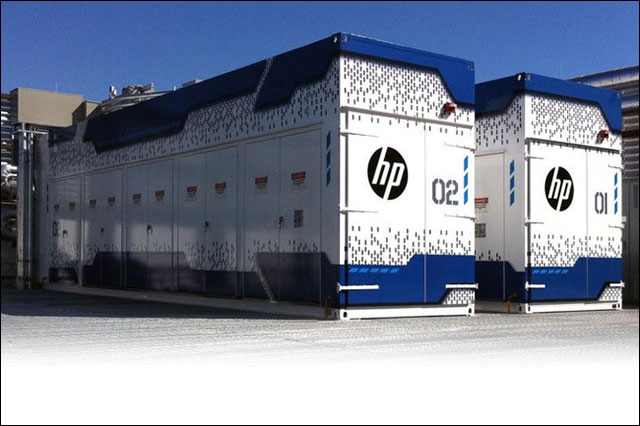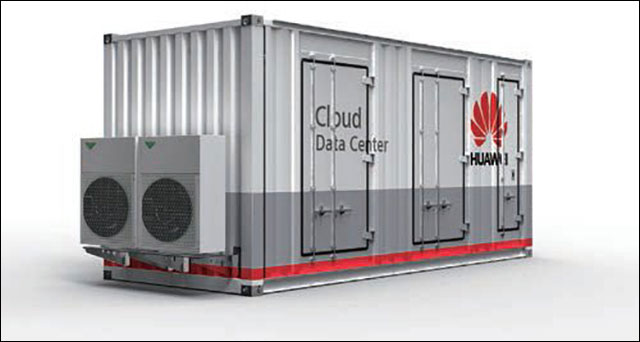Types of data center design
IT professionals always have to learn, apply new ways to design the structure for data centers to get efficiency, ensure large capacity and easy to expand without any trouble (efficiency, capacity and scalability).
Those who see the usual way - using network cabinets and placing servers - are inefficient and should consider switching to pre-designed network cabinets, container and container groups (engineered rack, pod and container).
Over the years, data center managers often use solutions that simply increase the number of parts of the server (component server) when high-performance operations are needed, such as buying 19-inch ceiling cabinets and inventory. On that server 1-4U. This is a simple and easy to understand way when workload increases. But this way is no longer as simple as before.
Limitations of ceiling cabinets
When vendors increase the amount of power consumed on the device, placing multiple servers in the cabinet can lead to many unexpected problems. For example, if a high-speed CPU can run very hot, the data center will have to take proper cooling measures.
Using a network cabinet without thinking about how to place the electrical system or server parts can lead to hot spots and it is difficult to cool, thereby causing the device to quickly fail.
As virtualization is used more and more, technology professionals do not use separate server, network and storage systems anymore. Instead, they put them close together, usually in the same cabinet or cabinet to get the best performance.
Because of this, cooling is difficult. Database architecture management tools (DCIM - Data Center Infrastructure Management) like nlyte or Trellis need to run the 'what if?' Script. (if so) and determine the future state by fluid dynamics (CFD - Complex Fluid Dynamics) to see which points are hot.
A new approach in designing data centers can help overcome this problem. More and more suppliers are offering pre-designed network cabinets with rows or pairs as a module or creating a completely separate 'data center' with standard containers to store everything. necessary to run a workload.
The reasons for Data Center crash
Building modular data center / container
The system is structured as a module or the other is a pre-designed pod. Cisco is a pioneer with UCS (Unified Computing System), followed by a collaboration between VMware, Cisco and EMC with VCE vBlock architecture. Since then, many firms have also launched similar products.

Modular data center
These modular data centers are a complete, separate solution with system management, virtualization, storage, network, power distribution and cooling tools. With a single-row system, the cooler will be on the line, while in the double-row system, they will be placed in the heating / cooling corridors.
But a big problem with the modular system is that when it comes to expansion it will take a big step to add other modules or add small systems like pre-designed network cabinets. Either way will not be easy.
Finally, a modular data center / container is born. Initially, the suppliers believed that this was a specialized system, used in separate cases, such as when small data centers were used for a short time, or long-term use but were not qualified for facilities. .
Container systems can be put into one place and as long as there is electricity to use (sometimes water for cooling), the container can still operate. Finally, it was realized that the container system could be used in data center design.
Built-in network cabinets are suitable for small changes, while modular models are more flexible but still need to be built in place. Containers only need to be taken to the car to go to the place, unloaded, plugged in and used.

Container center
Companies like Microsoft combine modules and containers in their latest data centers. Here, containers are used for basic tasks and need to run quickly and use modules when needed more flexible.
Upgrade modules and containers
The biggest problem of containerized systems is too rigid. If you want to change, you will have to remove it completely and rebuild it. Containers are fixed in size so the equipment used is also very specialized. The data center manager will see replacing the container with the new one rather than fixing the old one.
Some suppliers recognize this problem and have a solution, such as leasing and when the time expires, replace it with a new equivalent system, take the old one for recycling. Intel also developed a closed high-temperature container, increasing the likelihood of equipment failure due to overheating but running more efficiently with minimal cooling. The container runs for a while, when the equipment is broken, it is allowed to over-engineer to run at the original speed, then replace it with a new container, the old one is used for recycling.
Dedicated network cabinets, modules and containers all play a separate role in the data center's future. The life span of self-designed network cabinet systems is also getting shorter. Data center managers should consider using a variety of built-in modular systems, planning how to cool and capacity issues for the system properly.
See more:
- Learn about Amazon EC2 service
- Implement these tasks first when transferring data to Windows Server 2019
- Learn about RAID
You should read it
- Learn about the size of a network cabinet and how to choose a network cabinet that suits your needs
- The impressive images of the data center are located at a depth of 35m on the seabed of Microsoft
- For the first time, Vietnam has a data center of international standard
- Where does Google store your YouTube and Gmail videos?
- 7 steps for a green data center
- Implement these tasks first when transferring data to Windows Server 2019
- What is a network cabinet? The function of network cabinets for the server
- Inside the data center of Amazon Web Services
May be interested
- Inside the data center of Amazon Web Services
 amazon web services is a giant in the cloud computing industry. its customers are corporate organizations around the world such as netflix, bmw, disney, ge, tinder, and the cia.
amazon web services is a giant in the cloud computing industry. its customers are corporate organizations around the world such as netflix, bmw, disney, ge, tinder, and the cia. - Tips to get money at some data emergency centers
 copy additional data to your hard drive or create more diseases to charge more. guests who do not agree to correct will also have to pay an initial inspection fee that is not returned ...
copy additional data to your hard drive or create more diseases to charge more. guests who do not agree to correct will also have to pay an initial inspection fee that is not returned ... - Bring data centers to space to save electricity
 researchers believe that deploying data centers in space is a feasible solution in terms of technology, finance and environment.
researchers believe that deploying data centers in space is a feasible solution in terms of technology, finance and environment. - Virus destroys data that is spreading in Vietnam
 on the afternoon of october 10, according to the network security center bkis, the virus destroyed w32.chir.b@mm data, which infested more than 3,000 computers since september. in recent days, this virus has caused damage to many businesses
on the afternoon of october 10, according to the network security center bkis, the virus destroyed w32.chir.b@mm data, which infested more than 3,000 computers since september. in recent days, this virus has caused damage to many businesses - Number in C ++
 normally, when we work with number (numeric types), we use the original data types such as int, short, long, float and double, ... digital data types, values possible and their range of values, discussed in the data type chapter in c ++.
normally, when we work with number (numeric types), we use the original data types such as int, short, long, float and double, ... digital data types, values possible and their range of values, discussed in the data type chapter in c ++. - Distribute power to Data Center
 one-way electricity distribution has recently been proposed as the alternating power alternative method for data centers (ttds), however the information flows and conflicting announcements have caused fierce debate in the industry.
one-way electricity distribution has recently been proposed as the alternating power alternative method for data centers (ttds), however the information flows and conflicting announcements have caused fierce debate in the industry. - Implement these tasks first when transferring data to Windows Server 2019
 to smoothly transfer data to windows server 2019, start with native components, then the data center features and finally the windows admin center management tools.
to smoothly transfer data to windows server 2019, start with native components, then the data center features and finally the windows admin center management tools. - 4 Types of Windows Data That Are Growing in Size: How to Control Them?
 although windows storage sense efficiently deletes temporary files, some types of data are permanent and continue to accumulate.
although windows storage sense efficiently deletes temporary files, some types of data are permanent and continue to accumulate. - How to turn Kodi into an Arcade game center
 kodi aims to be the ultimate gateway for all types of entertainment (movies, music, etc.). in the next version, kodi will also fully support the game.
kodi aims to be the ultimate gateway for all types of entertainment (movies, music, etc.). in the next version, kodi will also fully support the game. - How to adjust the Control Center iOS 11 interface
 control center ios 11 supports users can add or remove any shortcut that you want, bring a better experience when using.
control center ios 11 supports users can add or remove any shortcut that you want, bring a better experience when using.










 Review Samsung 850 EVO 500GB - The best removable SSD on the market today
Review Samsung 850 EVO 500GB - The best removable SSD on the market today 9 SSDs for the best gaming for gamers
9 SSDs for the best gaming for gamers Synology NAS DS918 +: Powerful configuration, great scalability
Synology NAS DS918 +: Powerful configuration, great scalability Development history of gaming handles
Development history of gaming handles Top 10 best gaming screens under 5 million
Top 10 best gaming screens under 5 million Software to check the read and write speed of SSD hard drives, HDD best
Software to check the read and write speed of SSD hard drives, HDD best